Attack of the 5G Truthers!
[powerpress]
Thomas Johnson, the General Counsel at the FCC, wrote an op-ed in the Washington Post earlier this month titled “5G conspiracy theories threaten the U.S. recovery.” It deals with the roadblocks to deployment of 5G networks created by the technology-hesitant 5G Truther movement.
Just like the truther movements that oppose vaccination, genetically engineered foods, modern medicine, and masks to prevent the spread of the virus behind COVID-19, 5G Truthers offer a warped analysis based on extensive cherry-picking and pseudo-science. In this podcast, we cover the arguments made by the truthers, demographics, tactics, and the burden of fighting misinformation campaigns city-by-city and county-by-county.
Truthers target the city councils charged with modernizing the permitting process for small cells, preying on the ignorance of local officials ill-equipped to counter alternative facts about radio spectrum and epidemiology. The technology and innovation community face a daunting challenge: we need to get information out to local decision makers that they can understand about these complex topics.
In order to help with this, FCC General Counsel Johnson recorded a podcast with us. You can find an audio version at the top of the page, a YouTube here, and also a Facebook version on the High Tech Forum page.
In Our Own Backyards
Tom grew up in Northern New Jersey, so he’s been shocked by the efforts of Trenton to enact a ban on 5G. They can’t do this as a matter of federal law, but that doesn’t stop city councils from trying. Trenton, BTW, is reacting to the council’s belief that 5G caused the COVID-19 pandemic.
The Commission has also filed a Statement of Interest in a the case of CTIA v. City of Berkeley, where the council has enacted a warning label for phones alleging they’re unsafe. It also filed an SOI in another California case where plaintiffs claimed iPhones exceed FCC emission limits (they don’t.)
In Lakewood, Colorado, where I live, four members of the 11 person city council have been persuaded by a small activist group that 5G causes cancer and a host of other ailments. They’ve been able to slow down necessary revisions to city ordinances streamlining small cell permitting since January, prompting me to send the council a 23 page letter on the value of 5G and the safety assessment process for RF systems.
Radio Risk Assessment
As Tom explains in the podcast, fringe groups have complained about adverse health effects of electromagnetic frequency (EMF) emissions throughout the 100 years that we’ve had radio stations in the US. And for 100 years, the science, technology, and public health communities have concluded that limiting EMF power levels keeps the community safe from any such potential hazards while permitting us to enjoy the benefits of wireless communication.
The FCC has sole responsibility in the US for setting EMF power levels, which it discharges in consultation with FDA, EPA, CDC, and other government agencies as well as with the IEEE Standards Association.
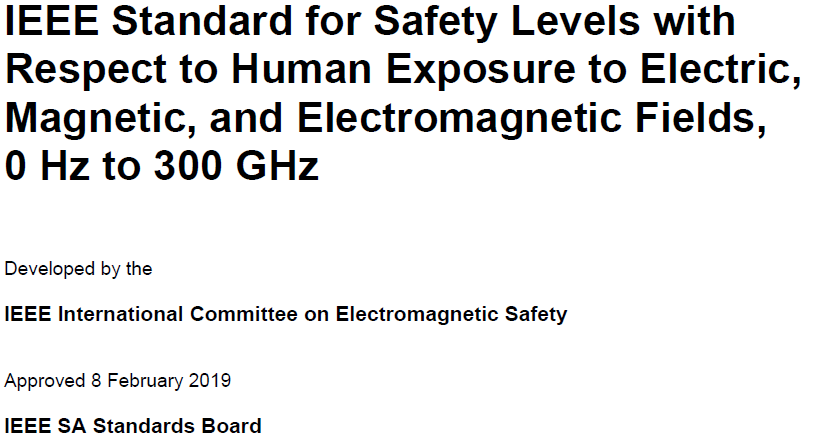
IEEE Std C95.1™-2019
IEEE International Committee on Electromagnetic Safety
The latest update from the electromagnetic safety committee is only a year and a half old, and it covers all relevant research in the area, including the two studies most commonly cited by 5G Truthers, the 2G GSM and CDMA NTP study and the hasty 2G Ramazzini study. IEEE SA covers both thermal effects caused by the heating of tissue as well as the non-thermal effects most commonly cited by truthers.
The literature review also evaluated the possibility of adverse health effects associated with chronic low-level exposure. For exposures to electric, magnetic, and electromagnetic fields at frequencies between 0 Hz and 300 GHz, the following two conclusions were reached:
- The weight-of-evidence provides no credible indication of adverse effects caused by chronic exposures below levels specified in IEEE Std C95.1™-2019.
- No biophysical mechanisms have been scientifically validated that would link chronic exposures below levels specified in IEEE Std C95.1™-2019 to adverse health effects.
Based on the collective findings of recent reviews, the weight of the evidence continues to indicate that chronic exposure at levels specified in this standard is unlikely to cause adverse health effects. Nonetheless, ICES Subcommittees routinely evaluate new research and will, if appropriate, initiate revision of IEEE Std. C95.1-2019.
We discuss this in the podcast.
FDA Review of Recent, Relevant Research
In addition to the IEEE-SA standard, FDA has published a comprehensive review titled “Review of Published Literature between 2008 and 2018 of Relevance to Radiofrequency Radiation and Cancer.” This 113 page study is quite comprehensive, of course, as it examines both in vivo live animal studies and epidemiological research on the human population.
FDA reached the same conclusion as IEEE-SA:
Based on the studies that are described in detail in this report, there is insufficient evidence to support a causal association between RFR exposure and tumorigenesis. There is a lack of clear dose response relationship, a lack of consistent findings or specificity, and a lack of biological mechanistic plausibility.
There’s nothing to see here, but the agency will continue to monitor the research, as they’ve always done.
International Commission on Non-Ionizing Radiation Protection
ICNIRP is a 48-year-old international science non-profit that advises the World Health Organization and other organizations on standards exposure to EMF emissions. It is the world’s leading expert on non-ionizing radiation from 0 Hz to 100 GHz, far below and far above the frequency range used by 5G (700Mhz-37GHz in the US.)
ICNIRP published an update to its “ICNIRP Guidelines for Limiting Exposure to Electromagnetic Fields (100 KHz to 300 GHz)” in March, 2020. Aside from minor revisions, it found that guidelines in place since 1998 are still fundamentally correct and not in need of major revision.
Of particular relevance to 5G mmWaves, ICNIRP finds that high frequency RF energy doesn’t penetrate the body:
As EMF frequency increases, exposure of the body and the resultant heating becomes more superficial, and above about 6 GHz this heating occurs predominantly within the skin. For example, 86% of the power at 6 and 300 GHz is absorbed within 8 and 0.2 mm of the surface respectively (Sasaki et al. 2017).
Signals that don’t penetrate the skin cannot affect processes inside the body. ICNRIP is highly respected and widely consulted by all of the world’s radio regulators, especially the WHO.
Scientific Committee on Emerging and Newly Identified Health Risks
The European Commission’s lead consultant body on EMF emissions, SCENIHR, published an important document in 2015, “Potential health effects of exposure to electromagnetic fields (EMF)” clarifying the source of health risks in mobile radio systems. The document focuses on radiation from personal devices because environmental EMF pollution from cell towers is negligible compared to radio and television broadcasts:
The environmental exposure from sources is dominated by broadcasting antennas, antennas from private and governmental telecommunication services and mobile communications base stations. Historical data from spot measurement campaigns and continuous radiation monitoring systems indicate that the introduction of new mobile telecommunication technologies after the deployment of the GSM and UMTS systems did not substantially change the average levels of EMF in the environment. At the same time, other technologies, like digital broadcasting, have in some regions contributed to the reduction of EMF exposure from far field sources.
SCENIHR is not worried about mmWave transmissions:
Millimetre wave and THz applications are expected to be available soon in various industrial environments, such as for imaging systems used for non-destructive quality control, as well as for short-range broadband telecommunications. Currently, they do not significantly affect the average exposure of the general public. These applications will operate with low power and, due to the small penetration depth of the radiation, expose only superficial tissues.
Like WHO, SCENIHR examines speculative non-thermal effects of non-ionizing radiation in addition to scientifically valid thermal ones and does not find support for the claims commonly made by 5G Truthers. Consequently, no global regulator of any standing supports the idea that 5G will have any untoward impact on public health.
The Federal Communications Commission
The FCC periodically analyzes and, if necessary, adjusts regulations on EMF emissions to ensure that the networks and devices we use are safe. The most recent such review was released on December 4, 2019. Oddly, anti-5Gers claim that FCC hasn’t looked a wireless safety for 20 years.
After reviewing the extensive record submitted in response to that inquiry, we find no appropriate basis for and thus decline to propose amendments to our existing limits at this time. We take to heart the findings of the Food & Drug Administration (FDA), an expert agency regarding the health impacts of consumer products, that “[t]he weight of scientific evidence has not linked cell phones with any health problems.”
In the 2019 review the FCC didn’t change basic power limits, but it did streamline one regulatory process and formalize another. The Commission’s December action is supported by a fulsome public record of thousands of comments by experts and the general public in three dockets.
Global Consensus or Massive Conspiracy?
The international consensus suggests that only one of two things is possible: either (a) The global conspiracy to suppress the truth about 5G is the most perfect conspiracy the world has ever seen, combining competing governments and, for all practical purposes, the entirety of the scientific and technical communities; or (b) 5G really is a safe technology ready for prime-time deployment.
I’m going with B, the tech really is safe, at least as safe as the Wi-Fi routers in our homes. There is no good reason for any permitting agency to second guess state and federal law regarding the siting and spacing of 5G small cells, and anyone who says otherwise has probably never attended a council meeting.
Keep it Neat and Tidy
While we don’t need city councils to play the role of public health experts, they do have a legitimate role to play in preserving the aesthetics of our neighborhoods. Small cells can be deployed in a way that doesn’t add to the visual clutter we commonly see on utility poles and macrocells.
Most cities have existing ordinances on street lamps that can easily be adapted to installations that put small cells into the urban and suburban landscapes. Small cells can be made to match their surroundings, to hide cables, and to provide lighting for the safety and convenience of the public.
The massive body of codes developed for street lights is easily adapted to 5G, and it’s incumbent on operators to work with cities and with the small cell industry to deploy cookie-cutter designs. There are many good examples of installations that provide good service without adding to visual clutter.
Spacing Out the Cells
Streetlights are generally spaced 110 – 200 feet apart, depending on the nature of the bulbs they use. Streetlight ordinances commonly specify a standard color, or a color compatible with their surroundings.
As streetlights need power and serve a public need, they’re the best analogs to small cells in the current inventory of available city codes. Given that safety is not a real problem, or at the very least not something city councils need to worry about, a coherent focus on aesthetics and speedy deployment best serves the public interest.
Broadband is not Broadcast!
5G Truthers follow the script developed in their predecessors’ campaigns against radio and TV broadcasting, putting the transmitting towers as far from neighborhoods as possible. Where I live, truthers want a minimum 1,300 foot separation between small cells and homes, 1,000 feet more than the codes they cite from affluent, technology-hesitant white communities such Larkspur and Calabasas, California.
They utterly fail to appreciate the fact that cellular broadband networks are bidirectional. Unlike broadcast networks, EMF exposure in cellular broadband comes mainly from our personal devices. So in the name of limiting exposure to RF energy, truther have effectively increased it by 100 times over the already too restrictive standards adopted in gated communities in the Golden State.
I don’t know whether to laugh or cry about this. Enjoy the podcast and drop us a line if you have a reaction or a suggestion about future guests.
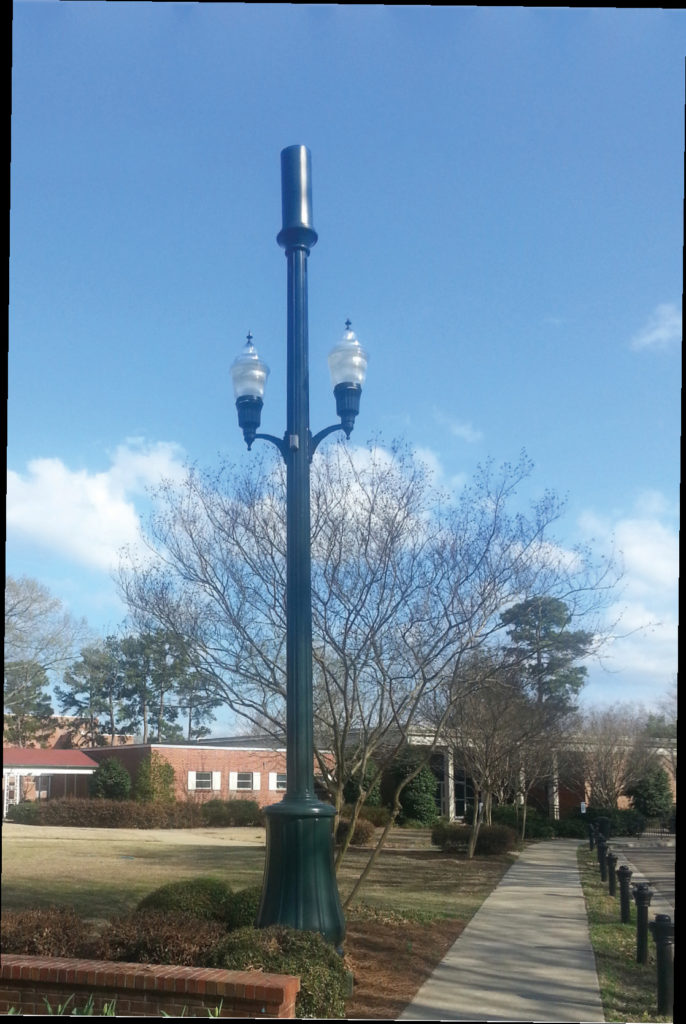
Traditional Design at Ole Miss
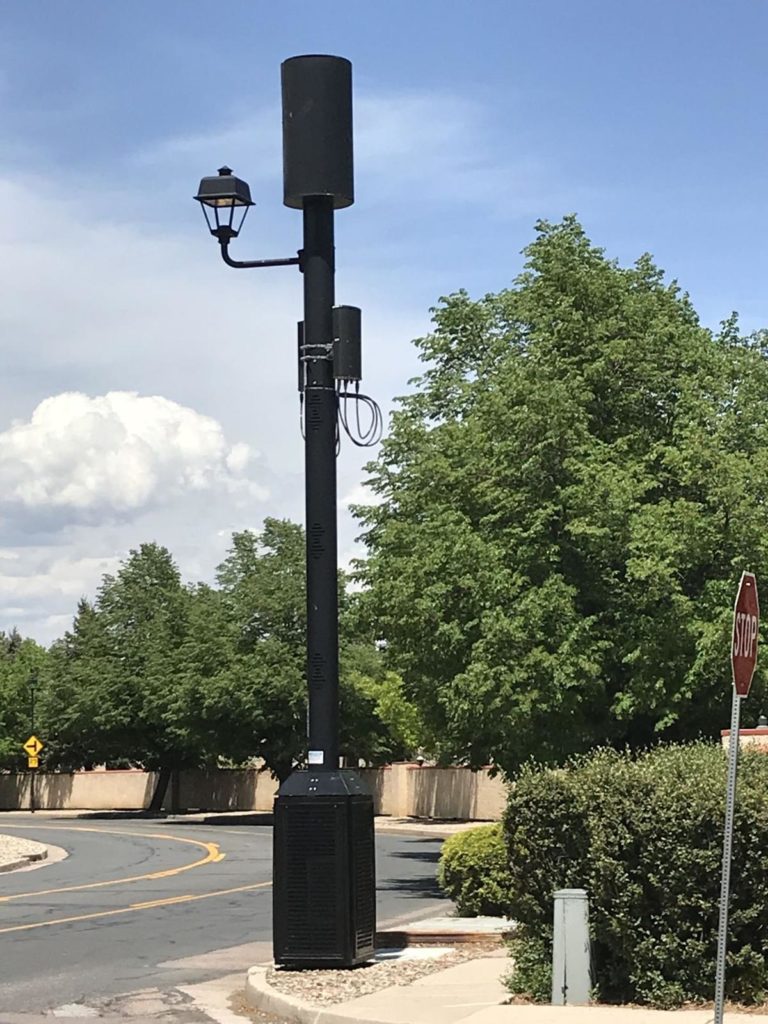
Street Light in Colorado Springs
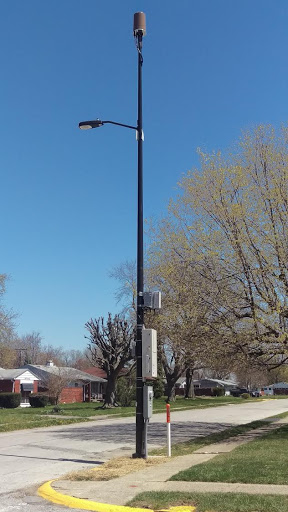
Zayo Streetlight
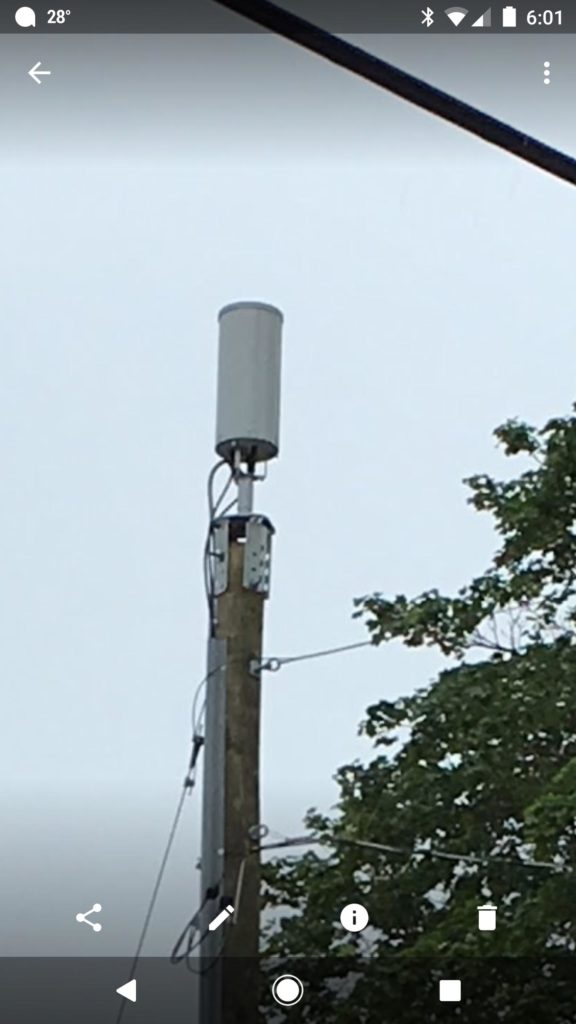
Verizon installation on Utility Pole
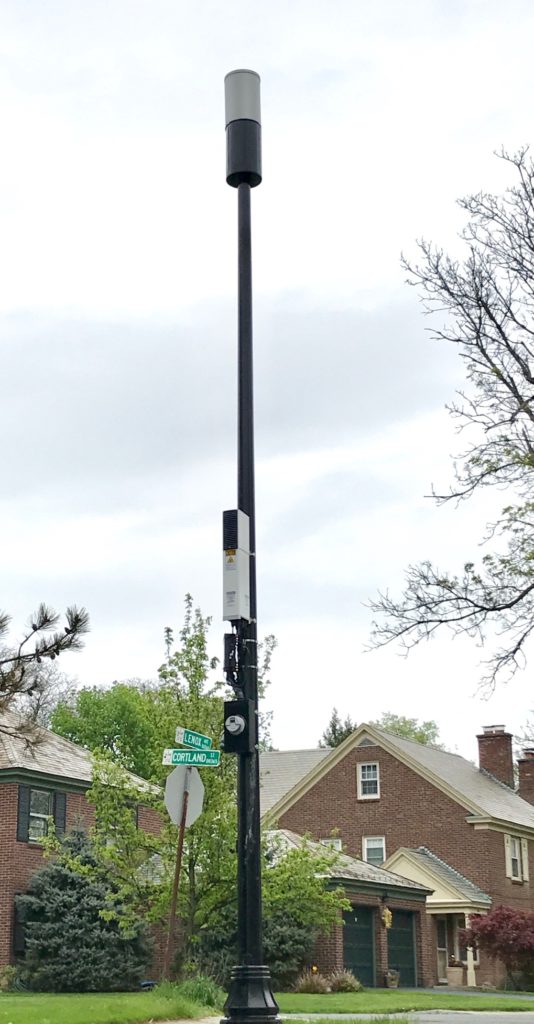
Denver Monopole
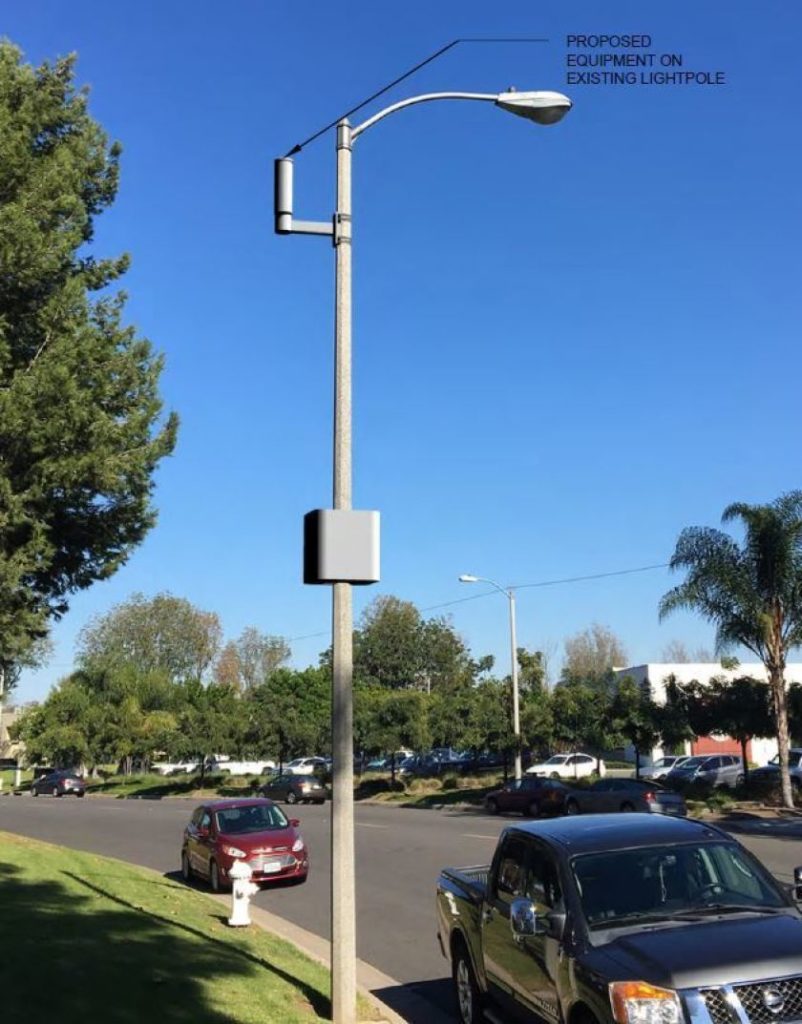
Traffic Light Installation in Carmel




